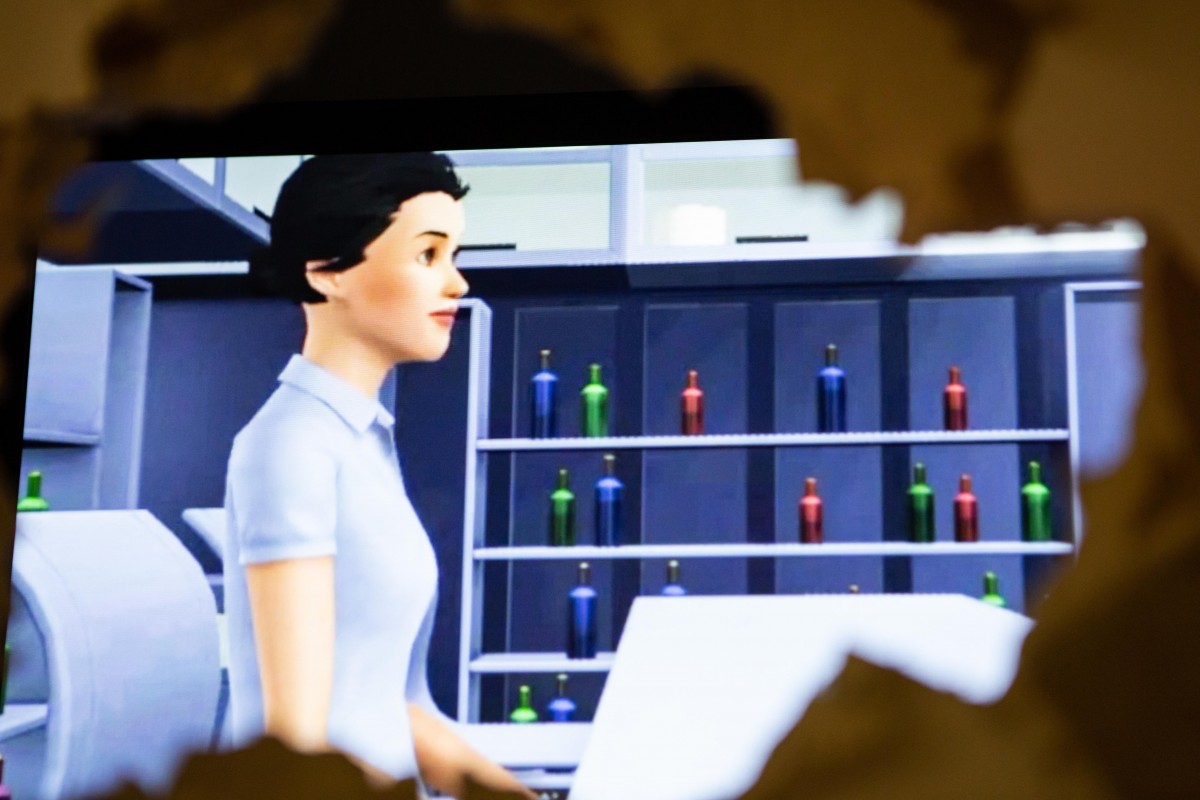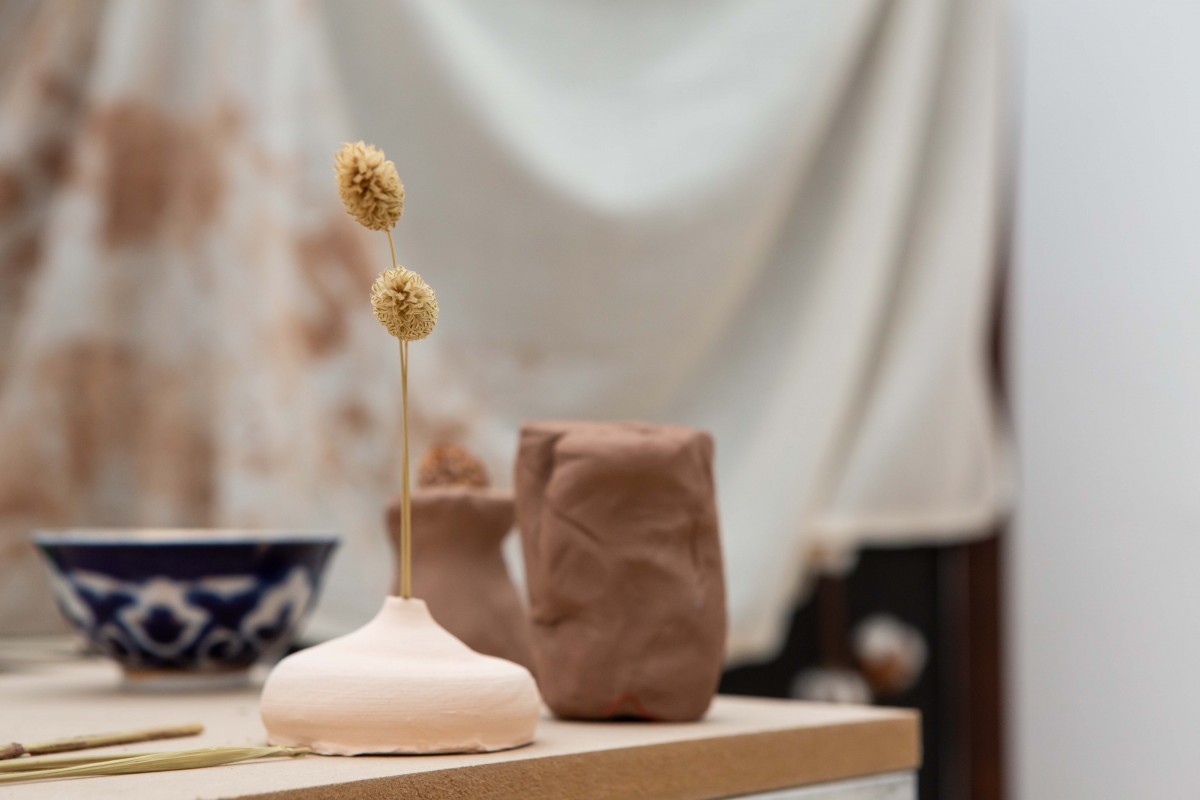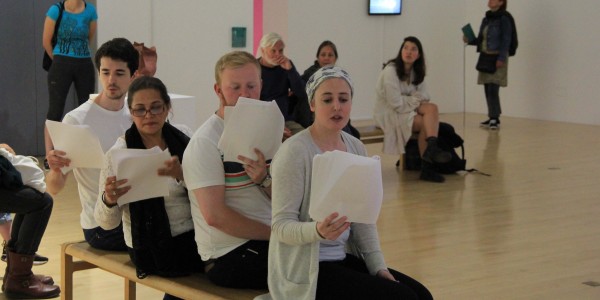Trading Zone 2019
-

Paul Abbott, Ben Caro, Gabrielle Gillott, Luis B. Guzmán, Daphne Jiyeon Jang, Asad Khan & Patricia Wu Wu, Cody Lukas, Cat & Éiméar McClay, Camilla Anvar Makhmudi, Elise Steenackers, Mohamed Tonsy, Chell Young
Trading Zone, Talbot Rice Gallery’s interdisciplinary student show returns. This year the University of Edinburgh’s contemporary art gallery bridges Architecture, Fashion, Fine Art, Intermedia, Landscape Architecture, Literature, Music, Painting and Sculpture.
Selected following an extensive search by the Gallery’s curators, the works reflect practices from across the College of Arts, Humanities and Social Sciences and gives insight into the important social, cultural and artistic concerns shaping current ideas.
Trading Zone 2019 reflects the precarious world in which we live. In the midst of the Extinction Rebellion movement and the ongoing turnmoil of Brexit, it shows us the results of fires caused by a plantation approach to forestry, teetering towers of people caught in a hierarchy and life within virtural bunkers.
Throughout however, there is still a sense of vibrancy and hope. These imaginative works are being made by emerging artists with the ability to reimagine our futures.
The artists often stretch the boundaries of their own diciplines. There is a writer who uses pottery to express his ideas, a sculptor who takes the approach of an archeologist to uncover unusual images and moments. There are artists who also stretch the boundaries of themselves, performing or contemplating the signs and symbols through which they are represented in society.
Trading Zone 2019 also shows the healthy diversity of the University community. One of these stories comes from the forests in Chile, another represents The Dust Enforcer – an entity from a science fiction book set in the Middle East. Another student talks about the enforced cotton plantation work in her home of Uzbekistan.
Eclectic, thought provoking and ranging across video, sculpture, installation and performance, Trading Zone 2019 is a student exhibition not to be missed.
Exhibition Guide
Published on the occasion of 'Trading Zone 2019' at Talbot Rice Gallery, University of Edinburgh. Edited by Tessa Giblin.
Texts by James Clegg and Stuart Fallon are available to view below, or download free of charge. A large print guide is also available to download.
Director's Intro | Tessa Giblin, Director of Talbot Rice Gallery
'Trading Zone' is a series of annual exhibitions drawn from artists, researchers and students of the University of Edinburgh, with many studying in undergraduate and postgraduate courses across Edinburgh College of Art. That may sound like an elaborate way to describe a ‘student show’, but as Talbot Rice Gallery approaches the curating of it with the attention and rigour we would any other exhibition, it really has become a point of exchange, a dance floor, or as Peter Galison describes interdisciplinarity, a Trading Zone.
It began in 2018, and thanks to the colleagues in the University who believed in our fledgling idea, particularly at ECA and Edinburgh Futures Institute, it has become the vibrant, surprising exhibition you see before you today. Trading Zone 2019 has been curated by James Clegg and Stuart Fallon, and I thank them, alongside all at Talbot Rice Gallery and colleagues across the University who have supported these students, creating a complex and engaging exhibition.

Elise Steenackers
MSc Playwriting
Anuna, 2019
Elise Steenackers has an MA in Linguistics, a background as a singer and cellist, and a distinguished career as an actress and theatre director in her native Belgium. Her current playwriting practice draws and builds upon this diverse wealth of experience. For Trading Zone 2019 Steenackers is showing and developing 'Anuna', her third play exploring ideas around neurodiversity, the perception of power and trauma, and the birth of new political voices.
'Anuna' is an ode to Anuna De Wever, the 17-year-old schoolgirl leading the current climate change marches in Belgium, and her more illustrious Swedish counterpart Greta Thunberg. The script’s form is a single monologue, cut into short rhythmic, repetitive lines, designed for four voices speaking collectively or in turn. The actors are free to divide and share the lines as they see fit, instinctively driving the narrative forward without any direct interference or influence from an external force. The result is a spontaneous, energetic, potentially chaotic chorus of voices all carrying the same urgent message. At a time when scientists warn that we must act now to avoid irreversible climate change (yet powerful individuals and governments are reluctant to act, or simply refuse to accept this reality) Anuna is an intense and timely tribute to the young voices of today that demand to be heard.
Four working drafts of the script will be present in the gallery throughout Trading Zone 2019, with visitors invited to read, and even read aloud its words. Steenackers will edit, update and replace the draft during the show, responding to rehearsals and recorded performances. The process will end with a live public performance of the latest version of Anuna at the end of the exhibition.

Luis B. Guzmán
MFA Art, Space & Nature
Lost Landscape, 2019
Luis B. Guzmán draws upon his background in painting and bio-ethics to create visually arresting works that relate to contemporary socio-political and environmental issues. Lost Landscape features drone footage taken over Ciénagas del Name in Guzmán’s Chilean homeland. These wetlands are seen from a variety of ecological points of view, from a ground-level walking fox, to the altitude of a soaring bird, charting different natural perspectives across this area of outstanding natural beauty. As the work unfolds, traces of charred land emerge, building towards scenes of complete environmental destruction. The work, created by Guzmán and edited by Diego Estrada, documents the aftermath of a 2017 fire that destroyed 183,000 hectares of forest and devastated the local ecosystem. Caused in part by the systemic introduction of non-native Douglas Firs in the 1970s – their regimented close planting causing the ignition and hastening the fire’s rapid spread – the work illustrates the catastrophic impact of plantation approaches to the natural environment, unregulated and fueled by commercial greed.
The footage is paired with videos of two digital constructions: re-animated from remnants found at the disaster site there is the skull of a native coypu, a large semi-aquatic rodent, and a feather, believed to be from a black-neck swan, hovering over a carpet of ash. These forensic elements act as poignant symbols of what has been lost, as well as practical scientific tools for future analysis.
During his time in Scotland Guzmán has uncovered similar large-scale industrial forestation that took place in the 1970s. The difference is that in Scotland The Royal Society for the Protection of Birds (RSPB) intentionally removed the trees in order to recover the natural scrub-land. This ongoing research and dialogue with the RSPB is informing the next chapter of Lost Landscape.
Daphne Jiyeon Jang
MFA Contemporary Art Practice
Babel - The Golden Boy, 2019
Caryatids and Atlantes, the sculptural figures that physically support buildings, often feature in Daphne Jiyeon Jang’s work. Whilst the models who posed for them might be forgotten, their immortalized forms effectively became the serfs who bear a city’s weight for centuries. In Jang’s own words – considering hierarchy, class and exclusion – this moving sculpture aims to, ‘unfreeze these sculptures from the prison of the past in order to imaginatively reconnect with them in the here and now.’
Babel – The Golden Boy builds from a previous work, Babel, and is constructed using virtual representations of Rodin’s The Thinker. This iconic sculpture has been reproduced many times with versions installed across the world. In Jang’s video, only one of these likenesses adopts the familiar meditative seated position, whilst the rest are uncoiled and made to support the weight of the tower of bodies’ supporting his activity. In the biblical story about the tower of Babel, God confounded the efforts of people trying to build a tower to heaven by giving them different languages so they no longer understand one another. Here, this silent work brings together ideas of knowledge and hierarchy, and the unspoken rules that keep society in place.
In this new version, The Golden Boy that stands atop Old College, housing Talbot Rice Gallery, climbs to establish himself as the emblem of Enlightenment. Originally created by John Hutchison in 1889, the statue is based on Edinburgh boxer Anthony Hall, who was revered for his athletic physique. A popular and notorious figure around Edinburgh, the athlete later became a life model for artists, and has crowned the top of the University’s Old College for the last 130 years. Modelled as a symbol of the enlightenment, with a physique wrought from the gritty life of a boxer, The Golden Boy is emblematic of learning and social mobility. With him only temporarily reaching the top of tower, in Jang’s work these ideals cannot be separated from a precarious sense of social hierarchies.

Cody Lukas
MFA Art, Space & Nature
Webster, 2019
Newborn, 2019
Processing, 2018/2019
Cody Lukas has three works in Trading Zone 2019, demonstrating his diverse engagement with the relationships between natural and technological processes. With a background in interactive technologies and environmental practice he explores remediation, in his own words, ‘looking to living systems and processes as “old media” and remediating them through modern technology, as craft, technique and equipment; effectively paralleling a wide variety of geological, biological and technological living processes to blur the borders between systems.’
Webster, 2019 (in the main White Gallery space) grapples with definitions of what constitutes life. This tapestry of contemporary thought collates facts, categorisations, quantifications, formulae, experimental results and theory. It expands – definition by definition – to incorporate geological processes and geographic features, ambiguous technologies, cyborgs and emergent species.
Newborn, 2019, is a series of 72 rocks remediated by Lukas. He explains, ‘Where most young rocks today are 10,000-years-old, an igneous rock is only as old as the last time it has undergone an igneous process. Here I have taken 300 million-year-old samples of basalt rock from Arthur’s Seat and melted them in a kiln.’ These rocks, organically finding their own forms, were all ‘born’ on 22 April 2019.
Processing, 2018/19, references an experiment reported in a journal and conducted on a zebrafish, which has the remarkable ability to regrow its tail, fins and large quantities of its heart. Here, Lukas represents the ethically questionable process in which scientists cut the tail off the fish 29 times before concluding that it will grow indefinitely. In this display, 29 static digital representations of the nerve cells reforming are shown alongside a video of the ‘living’ artificial intelligence that continually regenerates them.

Paul Abbott
PhD Creative Music Practice
DUCTUS, 2019
Paul Abbott is an artist and musician. Spanning sound, the body, language and the imagination he has created a fictional construct called DUCTUS from which to experience and attempt to comprehend, in his own words, ‘the vibrating edge of pulse and sign.’ The word ductus has multiple meanings, including: the number of strokes that make up a written letter, and the direction, sequence and speed in which they are written; a subtle reduction in the weight towards the middle of the stroke of the letter; a duct, tube or canal in the body. Through embodied investigation, Abbott mixes words with real and imaginary rhythm to punctuate and sculpt durational events.
During Trading Zone 2019, based on DUCTUS, Abbott will deliver a one-off live performance with drums and synthetic sounds, which he describes as ‘a comedy of vibrations and signs’. The DUCTUS performance features 51 minutes of audio across 12 tracks.
During the rest of the exhibition DUCTUS will be presented as a publication. This new writing allows people to engage with Abbott’s fictional characters, named DETECTIVE ENGINEER, QOSEL and STRIKE, who attempt to map experience in different ways. DETECTIVE ENGINEER only records quantitative information, QOSEL records nuanced feelings in the form of short phrases and STRIKE only through the movements of hand and drum-skin. Through these representations Abbott is asking us to think about the complex interplay of rational thought, intuition and embodied action that comprise the body as it is engaged in music. The footnotes in the publication reveal the tapestry of others’ thoughts that constitute some of QOSEL’s musings, an effective catalogue of attempts to map the transient, phenomenological terrain of experience. Complex, informative and playful at the same time, DUCTUS constitutes a kind of emergent, liminal interdisciplinary practice.

Chell Young
Painting, BA Hons
Shift, 2019
Chell Young’s work explores the quality of appearing realistic or true. In an era of fake news, Photoshopping and CGI, this is a terrain that seems to be fraught with issues, but Young’s work offers a protected space in which to consider the experience of being convinced and deceived.
Focusing on specific details our brains often make a number of assumptions in order to build a sense of reality. In cognitive science this is simply called ‘filling-in’. It is profoundly disconcerting if we see something that contradicts an established sense of reality.
In previous works, Young – drawing upon ideas from theatre – convincingly replicated a traditional Edinburgh flat, subjecting its safe homeliness to floods, fires and other (un)earthly terrors; they evoke the invasiveness of environmental concerns and catastrophes, eroding middle-class security, middle-class reality. In other works, her attention turns to places where art is produced and consumed. But throughout, it is the subtle play of deception that is the focus of the work; a pleasure taken in slowly suggesting that all is not what it seems, before slowly revealing how an image or video are actually made.
Shift was made especially for Trading Zone 2019, approaches the truth of the gallery space. Focusing on idiosyncratic corners, the limited information provided through her videos is enough to reveal that you are looking at nearby spaces. But this sense of correlating where you are with what you see becomes disrupted by unexpected occurrences. As Young puts it, ‘architecture is being used as a tool to create an irrational space where the viewer is made to reassess their understanding of the world around them. The representation appears as a double of the gallery space, mirroring its appearance whilst seeming paradoxical.’ So even when the ‘truth’ is finally revealed, it feels like it has been folded upon itself to become something less abstract, and more related to the complexity of embodied experience.

Cat & Éiméar McClay
BA Intermedia
You couldn’t tell the difference between a snowflake and a star, 2019
Cat & Éiméar McClay use video, sculpture and performance to explore ideas around identity, objectification and their attempts to reclaim ownership of their own image. As identical twins they are regularly subjected to unwanted attention and invasive interest, from being photographed in the street by strangers to facing predictable and repeated questions relating solely to their appearance. In response they use Photoshop as a tool to create ‘magic’; they fragment and dismember their own bodies and build virtual and physical dreamscapes for the viewer to enter and experience their alternative reality.
"You couldn’t tell the difference between a snowflake and a star", has been developed specifically for the Talbot Rice ‘alcove’. Considering the site as part TV set, part doll’s house, the McClay’s have carefully composed the space as an expanded video, combining elements of moving-image, print, sculpture and sound. They clash childlike colours with abject forms, all coated in sticky viscous film from their passing snails. Screens act as windows or trapdoors into their fantastical other worlds. Motifs of witchcraft, nature and dislocated limbs and digits float by, digitally fragmented and re-assembled to create unnerving, playful scenarios.
A regular performance utilises the semi-transparent curtain as a divider, separating the artists as they undertake a process of reciprocal dual-portraiture. Using digital technology and wordless communication they create new abstract definitions of their combined form, before uploading the result into the digital realm. By inserting their actual bodies into the installation, they further complicate the boundary between the real and the representational.
![Asad Khan & Patricia Wu Wu, 'THE DUST [N]FORCER', 2019. Video installation, Trading Zone, 2019. Image courtesy Talbot Rice Gallery, The University of Edinburgh.](/sites/default/files/styles/hero_image/public/2019-06/1G7A6955-Edit%202.jpg?itok=Rx3gcpCN)
Asad Khan & Patricia Wu Wu
PhD Architecture, PhD Design
THE DUST [N]FORCER, 2019
Asad Khan & Patricia Wu Wu have built a collaboration around a project exploring a complex fictional story called ‘The Dust Enforcer’, from Iranian writer and philosopher Reza Negarestani’s book Cyclonopedia: Complicity with Anonymous Materials, 2008. Bridging architecture and fashion, this creative objective has allowed them to produce images that, in their own words, ‘abduct human thought into unthinkable territories.’
The elements include: a LiDAR image (composed of laser points) of Wu Wu’s face, extrapolated to create a 3D printed mask, shown among the dust-like debris or ‘scaffolding’ from the printer; and a moving-image work made from a LiDAR capture of Wu Wu performing choreographed movements whilst wearing the mask and a tinfoil suit. As the costume diffracts the lasers it fragments her body and as the artists put it, ‘the boundaries between skin and world are ontologically erased.’
The dust enforcer refers to the wind in Negarestani’s story, which aids the progression of a Mesopotamian demon called Pazuzu. ‘Pazuzu the demon feeds on dust ... scavenges the surface biosphere of earth as dust clouds or inorganic bacterial relics ....’ In a sense, the demon represents the way that matter haunts humanity in a time of ecological crisis and change. It is a philosophical challenge concisely expressed by Professor Steven Connor: ‘Sand belongs to the great, diffuse class, undeclared, rarely described, but insistent and insinuating, of what may be called quasi-choate matters – among them mist, smoke, dust, snow, sugar, cinders ... pseudo-substances [that] hover, drift and ooze between consistency and dissolution, holding together even as they come apart from themselves.’
The contradiction of holding together whilst coming apart speaks to contemporary concerns with Inhumanism and the Anthropocene: from a reconstruction of what it means to be ‘human’ and the idea that humanity will leave an indelible geological trace. This tension – driven by nature, coaxed by the wind or the dust enforcer – necessitates a revaluation of where our boundaries lie and what it is exactly that makes us present.

Ben Caro
MA Fine Art
Close to one second, 2019
Blanchard’s Club, 2019
Ben Caro has recently been exploring and using photography as a sculptural medium. He takes an archeological approach to sourcing material and making work, trawling through second-hand stores, mining online auctions for rare materials and mudlarking in the Thames in search of lost treasures. The passage of time and the process of decay are ongoing concerns in his work. Deploying outmoded or defunct machinery and discontinued and unstable materials, the finitude of what he selects to preserve in print and in sculpture has a pathos about it; his interest in slowing down and suspending moments of time extends to how the work will be consumed. Often working on a small scale, with a precise attention to detail he hopes to encourage what he refers to as ‘close looking’.
Close to one second captures a bird in a state between graceful flight and landing in a flurry of feathers and wings. This moment of chaotic readjustment is slowed down, reversing and repeating – freezing the bird in transitional perpetuity within the confines of a life-sized screen. Originally filmed on Super 8 (digitally scanned, shown on a computer screen and then re-photographed with 35mm slide film) each frame records a hint of the action. Shown on a carousel slide projector in a constant loop, the frozen fragments are re-animated, introducing time back into the scene, breathing life back into the suspended bird.
Blanchard’s Club consists of five frames carefully cut from an unplayable 1925 nitrate film reel. Blindly purchased from eBay, the unraveled celluloid stock revealed to Caro a series of music hall dance scenes. He selected and isolated frames where the foreground dancers are captured as a blur of movement, transition points between the disciplined formal choreography, whilst motionless spectators look on. Using out-of-date and out-of- production FP 100C instant film and a slide printer, Caro immortalizes these ephemeral moments – the last chance to capture the last dance.
‘At the still point of the turning world ... there the dance is’. T.S.Elliot, Burnt Norton.

Gabrielle Gillott
MA Fine Art
Safe Haven, 2019; Self Soothing, 2019; Kernel of Truth, 2019
Gabrielle Gillott’s series of works exploring bunkers and doomsday preppers was triggered by a paint swatch. Evocative of middle- class aspirations and the idea that a lifestyle can be painted onto a wall, the swatch announced that the heady lavender colour was called Safe Haven. Gillott ran with the associations and started researching a number of subcultures. She recalls, ‘with time my interest in doomsday preppers evolved into a fascination with those prepping for a no-deal Brexit ... I have infiltrated Brexit preppers’s private Facebook groups where I was drawn to the aesthetics of photographed stockpiles – also referred to as “stockpile porn”. These photos of capitalist titillation seem to offer a distraction, or suppression, of very real anxieties around the UK’s current status.’
Gillott extended the approach to other swatch names, considering the bunker design implications of Kernel of Truth and Self Soothing. These videos are created within the video game environment of The Sims. Billed as a ‘life simulation game’, The Sims enables players to construct houses and develop careers for the inhabitants of a suburban neighbourhood. The uncomfortable ideology contained within the game was concisely captured by Chris Thursten writing for PC Gamer: ‘There’s a blithe naivety to the way that life is presented in The Sims ... loaded with assumptions about the way that people function and about the way that success in life is gauged ... set in a world where buying things is always awesome and everybody is twenty-five until they’re sixty.’
Gillott manipulated the game using cheat codes to allow her to imprison and then film the characters within her stark, garish bunkers. They have no means of escape and little means of entertainment. Observing the mundanity of their actions we become exaggerated versions of the gamers, spending our lives watching reductive simulations of ‘life’. Safe Haven, Kernel of Truth and Self Soothing offer self-fulfilling prophesies in which the inanity of middle-class aspirations meet the consequences of social catastrophe.
Camilla Anvar Makhmudi
MA Fine Art
MANKURT, 2019
Camilla Anvar Makhmudi makes work that draws upon her upbringing in Uzbekistan. In 2018 she staged a wedding ceremony at Edinburgh College of Art in order to focus attention on the fact that women of her age who stayed in the country were being forced into arranged marriages. With MANKURT she considers the strict work ethic of its post-communist society, which still enforces the labour of hundreds of thousands of people – including children – on its cotton plantations.
MANKURT questions the relative values of labour, craft and art by referencing The Epic of Manas, a legend (some think to be based on true stories) about prisoners forced to wear tight camel-hide caps that would shrink in the desert sun, inducing brain damage in the wearer. The Mankurt, as they were known, were deprived of free-will and rendered slaves. Makhmudi links this story to cotton production. Cotton, known as ‘white gold’ in Uzbekistan, is a principal part of a historically isolated economy. It is the national emblem, recurring in ceramics in homes across the country. Yet, in this arid climate, the plantation-growing of a plant known to require vast amounts of water is ecologically destructive. The human implication of its farming, based on control and exploitation, is equally devastating.
With this durational work – which will evolve in the Round Room through the course of the exhibition – Makhmudi works with clay to evoke labour, the land and work ethic. Maintaining a critical self- awareness, as a student and artist now studying in Edinburgh, she comments that: ‘With this work I began to question the very nature of the notion of “fine art” and its colonial inherent whiteness, its relationship to the institution and the ebb and flow of privilege. Using the live hand-building of pottery and storytelling, I draw parallels between the legends of the Mankurts, Persian slaves who were tortured until they became empty vessels, stripped of identity and personhood, and the trauma inflicted on immigrants and people of colour by the emotional labour of being “other”.’
![Mohamed Tonsy, 'Gawabat', [detail] 2019. Installation view, Trading Zone, 2019. Image courtesy of Talbot Rice Galley, The University of Edinburgh.](/sites/default/files/styles/hero_image/public/2019-06/1G7A7191%20Mohamed%201_1.jpg?itok=Njvs7nn0)
Mohamed Tonsy
PhD Creative Writing
Gawabat, 2019
Egyptian-born Mohamed Tonsy uses literature and ceramics to filter his own biographical history and explore imagined near futures. Tonsy was present in Tahrir Square in Cairo during the height of the Arab Spring in 2011. This experience and its aftermath fuels his ongoing literary work. His current manuscript is set in a near-future Egypt – a world of censorship, blackouts and water shortages – and the main protagonist’s attempts at a quiet rebellion. His concurrent ceramics practice indirectly informs and is informed by this study. He trains and practices in wheel-thrown and hand-building techniques, exploring Deleuzian ideas of repetition and difference, and how a practiced motion can produce vastly different results. Until now Tonsy has kept his writing and ceramics separate, for Trading Zone 2019 however, he has broken down the barrier, exploring the combined power and potential of integrating both elements.
Each of the ceramic pieces in Trading Zone 2019 was intuitively moulded, the clay shaped whilst recalling events in the manuscript. Inevitably, parts of his own personal history seep through as well. The result is a series of ruptured, precarious forms, not fit for traditional purpose yet bursting and bristling with narrative meaning. Collaborating with artist Beth Longmore, sections of the text were then scratched, ‘slipped’ and etched onto the surface of the ceramics, marking the physical material with the words that fueled their creation. The finished pieces are found throughout the exhibition, requiring the viewer to journey between the fragments and inviting them to fill in the narrative gaps.
Tonsy remarks, ‘Egyptian folklore states that one must not call a demon by its true name, for that will summon it. I don’t believe in demons – most of the time – but I believe in the effect a story like that can have on inherited societal norms where authority figures are not to be questioned, and the importance of breaking that tradition. A story isn’t a name, but it points towards something, which is what a name does, which is what questioning does; it’s a minor revolution.’
Thanks
Edinburgh Futures Institute have generously funded Trading Zone since it launched in 2018 – our thanks to them for allowing us to continue this project.
Thanks to all the artists who have made the preparation of this exhibition such an interesting and inspiring process.
Our thanks to Stuart Bennett, Judith Miller and Dorothy Miell for their ongoing support and all our colleagues in the University of Edinburgh and Edinburgh College of Art.
We are grateful to everyone who helped us connect with students across the College of Art, Humanities and Social Sciences, including: John Beagles, Keith Farquhar, Jonathan Owen, Aurélien Froment, Susan Mowatt, Neil Clements, Charlie Hammond, Gordon Brennan, Rachel MacLean, Zoe Walker, Kenny Hunter, Larissa Pschetz, Zoe Patterson, Jessamy Kelly, Martin Parker, Nikki Moran, Donald Urquhart, Nicola McCartney, Jane McKie, Nacim Pak-Shiraz and Simone Ferracina. Additonal thanks to all who supported our thinking around the project.
Thanks to the technicians who have installed the exhibition, Casey Miller, Thom Rees and Callum Monteith. Thanks to Malcolm Cruickshank for his support with fabrication.
As always, thanks to our Volunteer Information Assistants.
Endnotes
Page 09 – Processing was based on the following paper:
Azevedo AS, Grotek B, Jacinto A, Weidinger G, Saúde L (2011) The Regenerative Capacity of the Zebrafish Caudal Fin Is Not Affected by Repeated Amputations. PLoS ONE 6(7): e22820. (Available at https:// doi.org/10.1371/journal.pone.0022820 ).
Page 14 – Steven Connor, ‘The Dust That Measures All Our Time’, 2010 is available at http://stevenconnor.com/sand/sand.pdf
Page 15 – TS Eliot’s Burnt Norton can be found in various sites online including: http://www.davidgorman.com/4Quartets/1-norton.htm

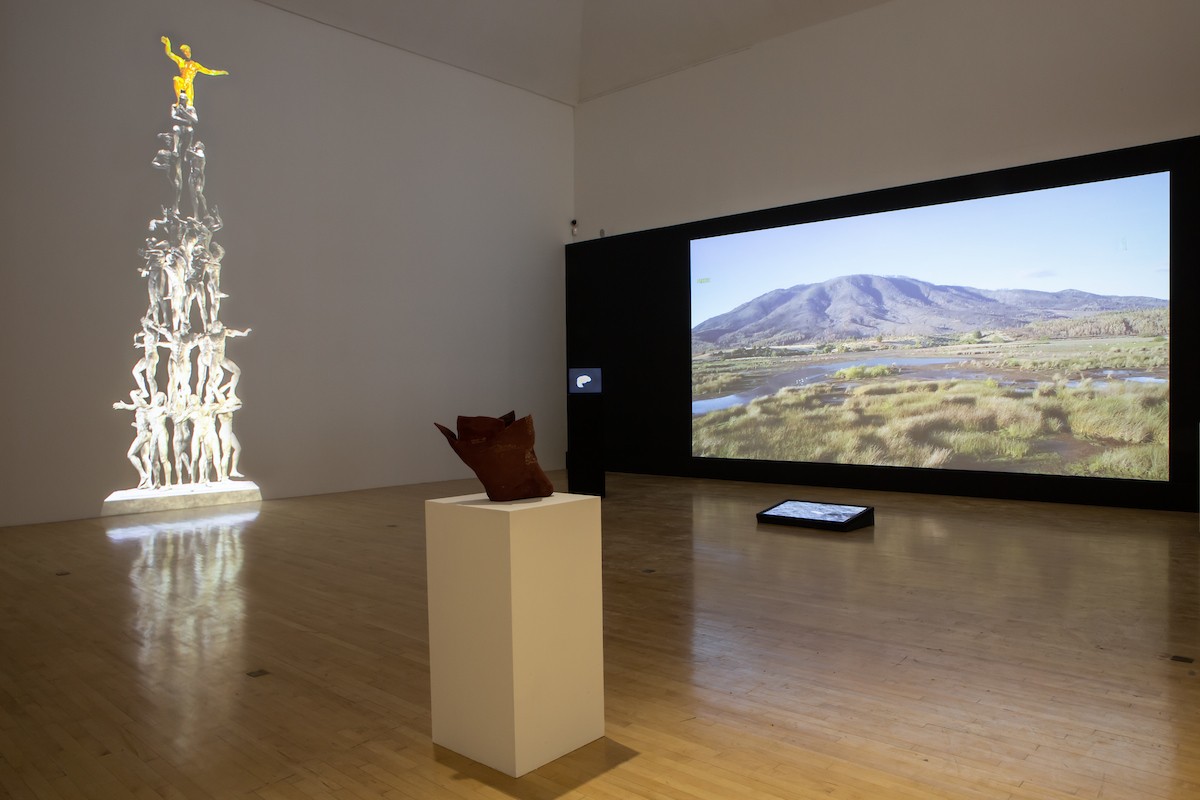
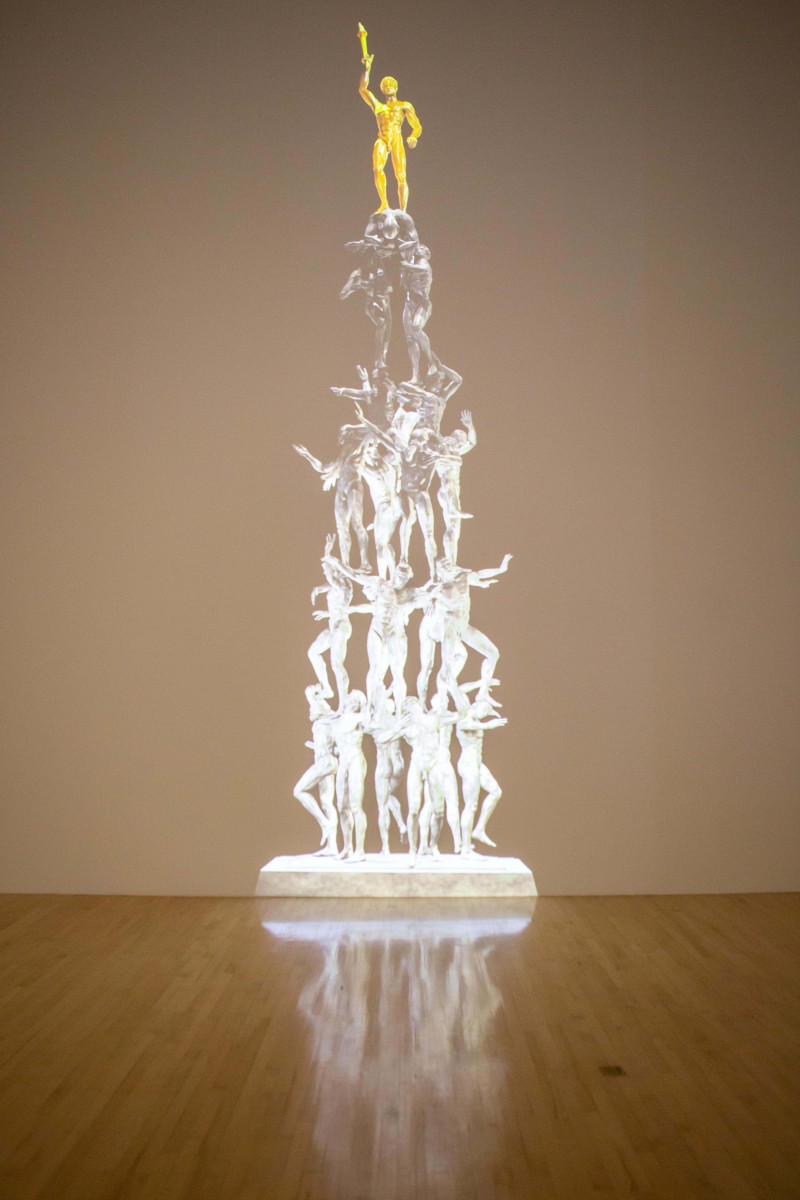


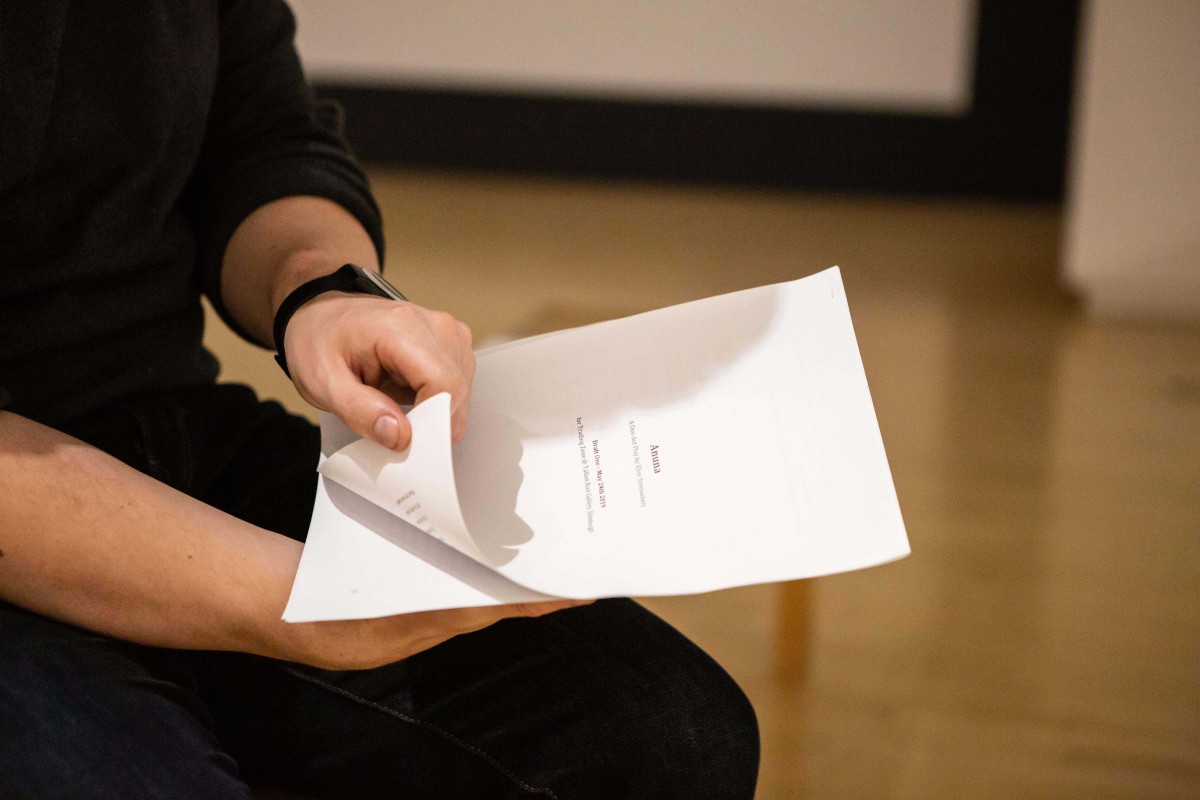
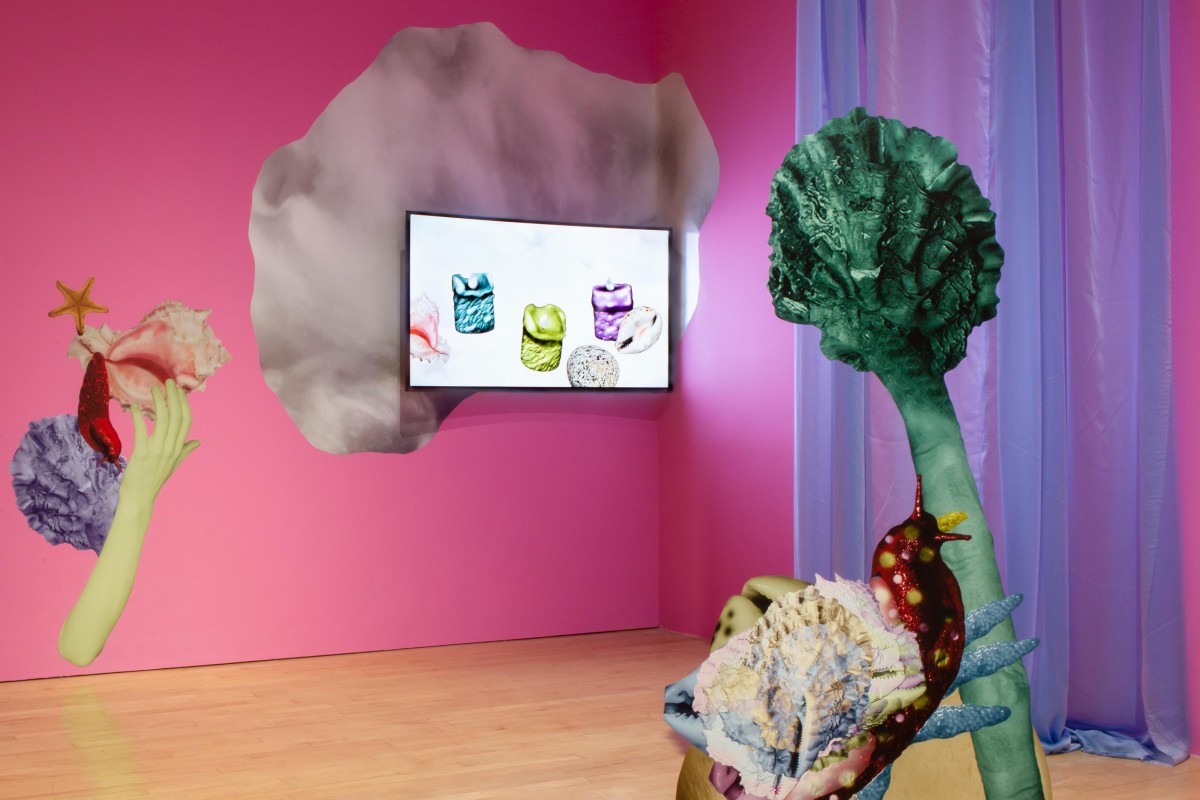
![Assad Khan and Patricia Wu Wu, 'THE DUST [N]FORCER', 2019. Video installation, Trading Zone, 2019. Image courtesy of Talbot Rice, The University of Edinburgh](/sites/default/files/styles/hero_image/public/2019-06/1G7A6943-Edit%20Dust%20Inforcer.jpg?itok=rtdSXdk7)
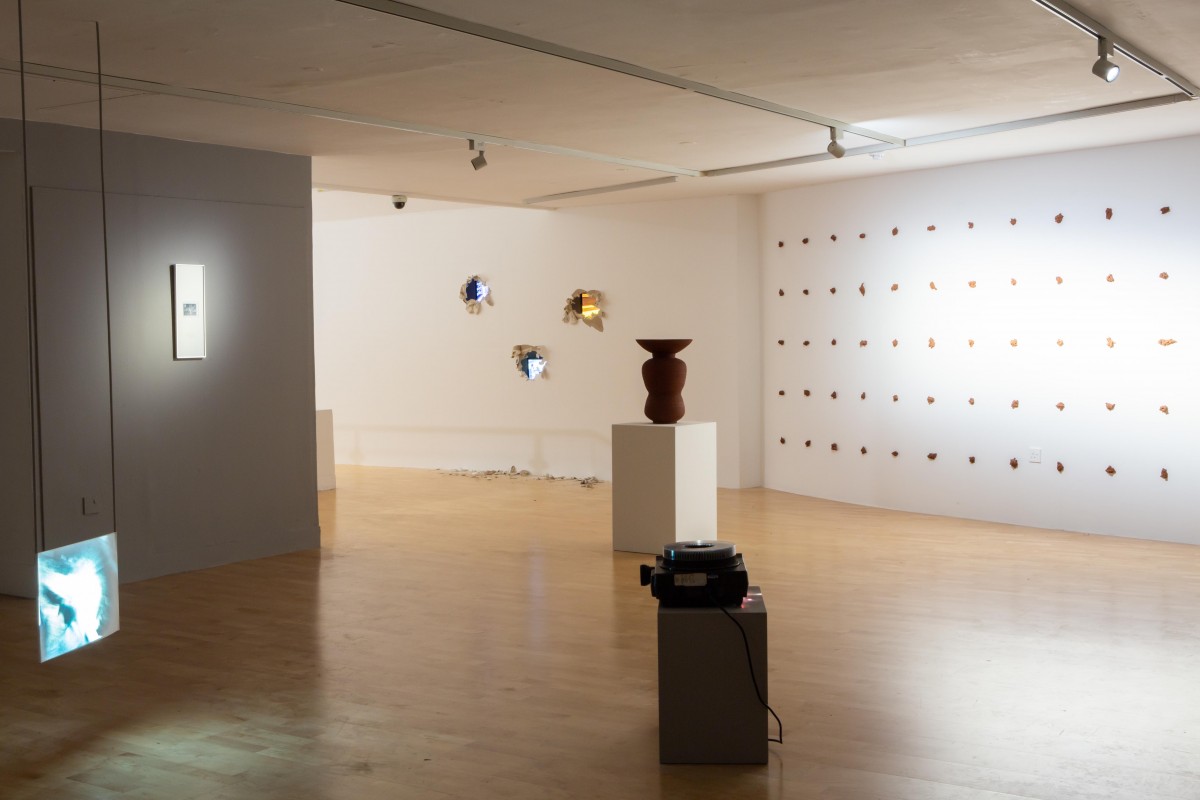
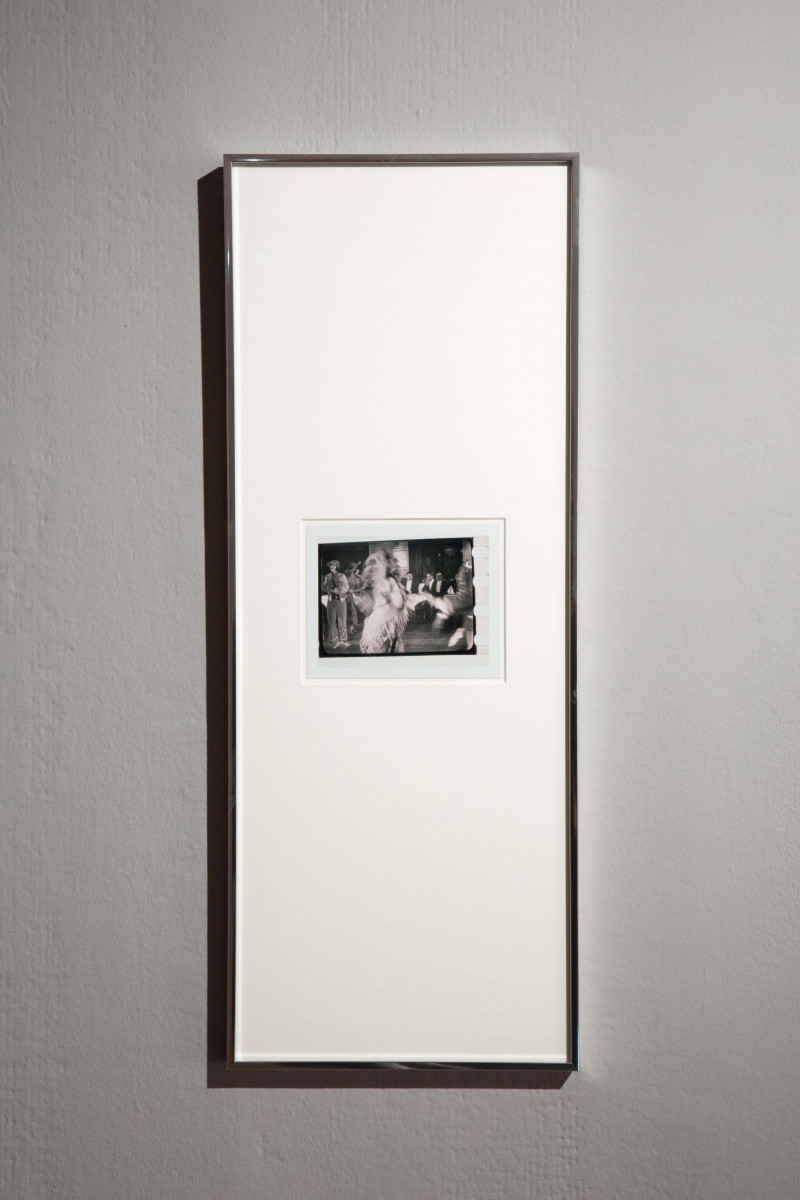
![Mohamed Tonsy, 'Gawabat' [detail], 2019. Installation view, Trading Zone, 2019. Image courtesy Talbot Rice Gallery, The University of Edinburgh](/sites/default/files/styles/hero_portrait/public/2019-06/1G7A6973%20Mohamed.jpg?itok=ZgID7WHB)
